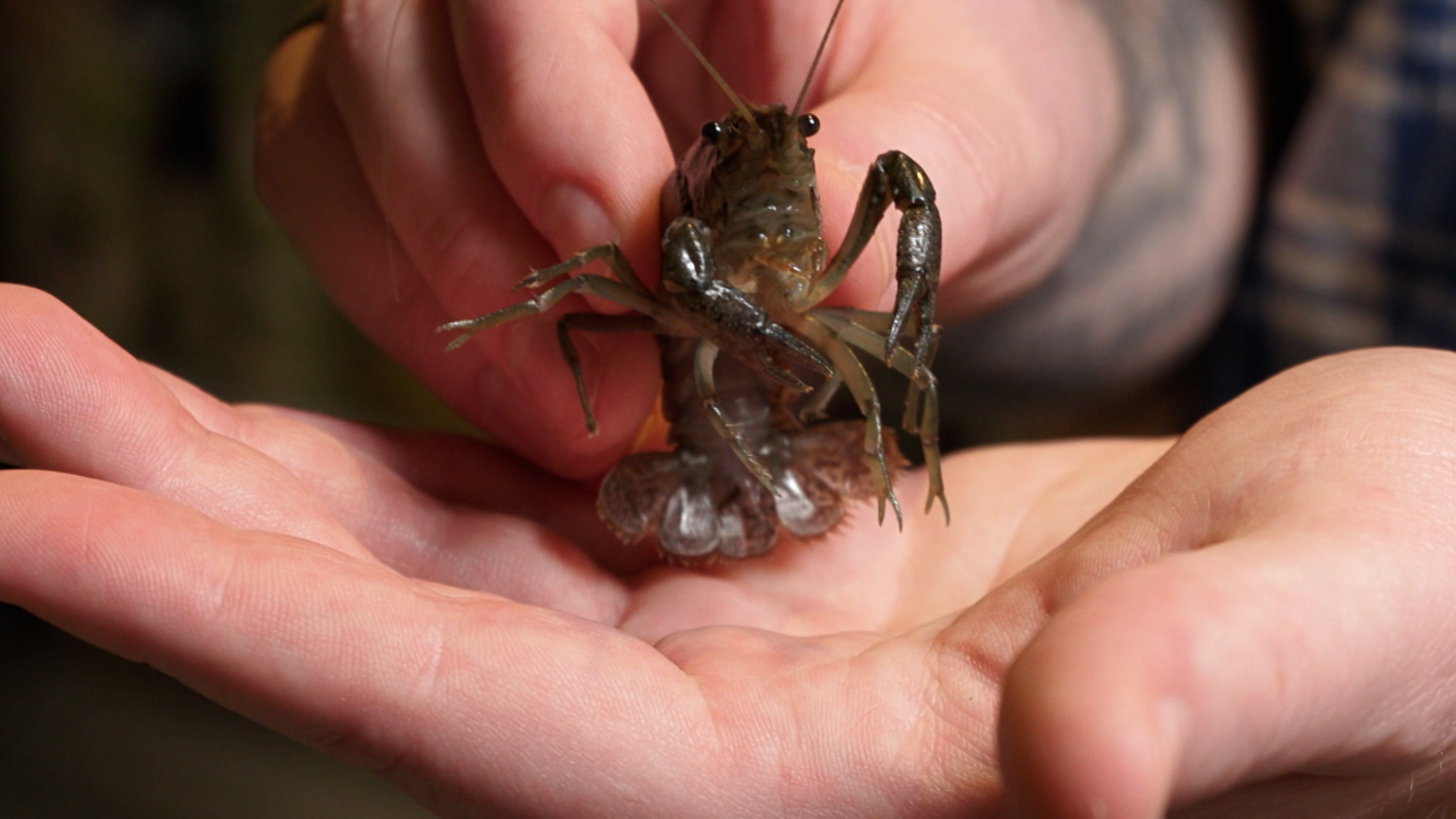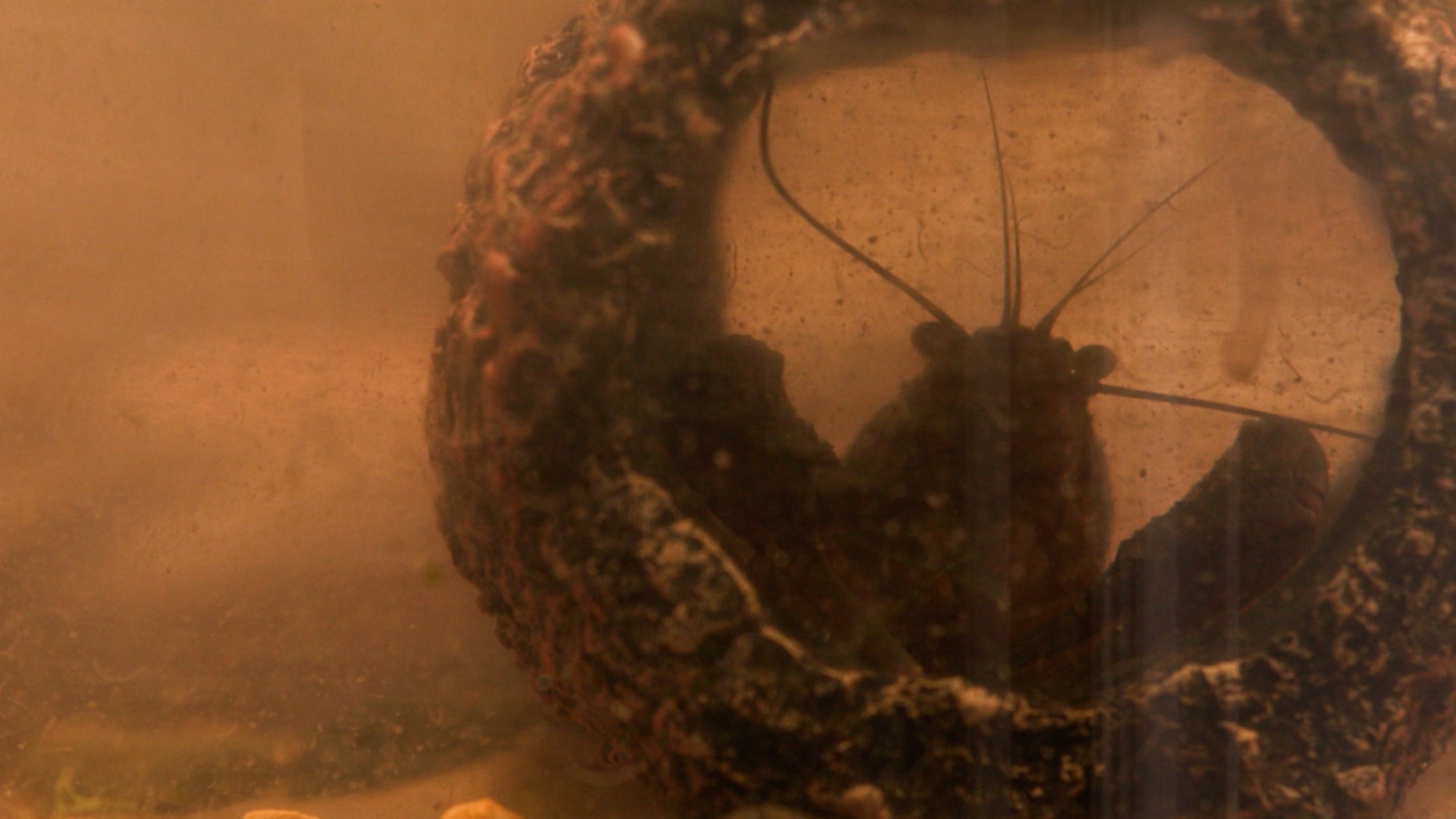
It all started with a mottled little crustacean crawling across a soccer field in Ontario’s Burlington City Park in October 2021, a few miles from Lake Ontario.
The animal may have looked innocuous, but this was the first sign of a costly and grueling ongoing battle against a potentially devastating new invasive species in the Great Lakes. It was a marbled crayfish, a creature with no native land, whose ancestor mutated into existence in captivity.
Marbled crayfish are able to reproduce asexually and prolifically, meaning: “if it’s introduced into a new water body, the population might grow exponentially,” said Natalia Szklaruk, coordinator of the Great Lakes Invasive Crayfish Collaborative. “It’s really scary.”
When local officials and scientists first heard about the crayfish that fall, they weren’t overly concerned. They assumed it would be killed by the coming winter temperatures. Ontario had recently announced a ban on selling and possessing marbled crayfish.
“So I suspect someone found out about that, got afraid and released them,” said Brook Schryer, assistant coordinator with the Invading Species Awareness Program of the Ontario Federation of Anglers and Hunters. The stormwater ponds were already known as havens for dumped pets, including goldfish and rosy-cheeked minnows.
In the spring of 2022, Schryer and colleagues returned to sample stormwater retention ponds in the park for eDNA, or environmental DNA, left in the water by species. The first sample yielded none, but a follow-up showed faint signs of eDNA, as did a third test. Canvassing with nets and other tools yielded no actual crayfish, however, and they felt the situation was under control.
But the following year, on July 5, 2023, Schryer was in the area hunting for invasive “mystery snails,” and got a text from a groundskeeper who had a marbled crayfish in his hand. The next week, another one was found. The next day, two more, as Schryer recounted, and the sightings multiplied.
“It was like a floodgate opened,” Schryer said. “Once we found the first one, it was absolutely crazy.”
By fall 2023, a marbled crayfish working group was formed, including Schryer’s NGO, and federal and Ontario officials.
“We went out and expanded the search beyond the park,” Schryer explained. “We know they’re in the park, but where else could they be? These things are fairly cryptic in the way they act. They like to hide.”
Last winter, the ponds in the park were drained in hopes that the crayfish would freeze to death. But that didn’t happen, likely thanks to the unseasonably warm weather and their burrowing ability. Now the group has launched a regional sweep from Ottawa in eastern Ontario to Windsor across the border from Detroit.
“I really hope they’re just here,” in Burlington City Park, said Schryer. “That this is ground zero. At the same time, I’m not naïve. We need to really truly get an idea of the extent of this issue.”
There are already at least two invasive crayfish species in the Great Lakes – the rusty crayfish and red swamp crayfish, which have wreaked havoc in part because they are “polytrophic omnivores, they’ll eat insects, aquatic plants, mollusks, detritus – whatever they can get their claws on,” said Szklaruk.
But the marbled crayfish’s asexuality presents a unique threat.
“It truly only takes one, whereas with other species, the stars have to align so it can find a suitable mate,” said Connor Shelly, GIS specialist at Michigan Sea Grant. Additionally, marbled crayfish reach sexual maturity at six months, “which is very young as far as crayfish go.”
The marbled crayfish is thought to have first appeared in 1995 in Germany’s pet trade, possibly as the result of a mutation among reproducing slough crayfish transported on an international flight.
“Some think it got too hot in the plane and that led to mutation,” said Shelly. “Or two slough crayfish from very different individual populations mated on the journey across, and the result was marbled crayfish.”
In Burlington, last winter staff drained the stormwater repository where the marbled crayfish were found, hoping to expose them to lethal winter temperatures. This spring, more crayfish appeared.
“It’s known to avoid adverse conditions by burrowing,” said Shelley, noting that such burrowing can also destabilize riverbanks and could hurt wild rice paddies in the Great Lakes region. He said that marbled crayfish have also been reported in Poland and Sweden – despite their northern climates. “We were hopeful the Great Lakes were too cold for it to survive, but evidence of the last few years suggests otherwise.”
Scientists are worried the crayfish from Burlington Park could make it several miles into Lake Ontario, carried by birds or in anglers’ bait buckets. Unlike most Great Lakes invasive species that spread through lakes by swimming or hitching a ride on boat hulls or in ship ballast, crayfish can also walk.
“That ability to spread over land makes them more difficult to control than fish, and the ability to burrow into the sediments and avoid poisons or toxins or other control mechanisms” complicates control, said Rochelle Sturtevant, program manager at NOAA’s Great Lakes Aquatic Nonindigenous Species Information System (GLANSIS) for Michigan Sea Grant. “If you try to poison them, they walk away.”

Marbled crayfish. (Photo Credit: GLN)
In Wisconsin, thousands of gallons of bleach and clay have been used to eradicate red swamp crayfish. Carbon dioxide injected in water can be used to flush crayfish out or suffocate them, and baited traps can catch them. Yet, efforts to control red swamp crayfish have shown just how hard it can be, especially since crayfish produce hundreds of eggs at a time, a “clutch” of tiny young that once hatched hang onto the mother’s underside for up to two weeks.
Sales of marbled crayfish are banned in multiple states. In 2022, an Ohio woman pleaded guilty to federal charges of knowingly selling marbled crayfish 96 times for $2,812. Since Ohio bans possessing or selling the species, her business violated the federal Lacey Act which prohibits sales of illegally acquired plant and animals.
“They’re restricted in most of the Great Lakes states,” Sturtevant said. “But backyard hobby breeders trading things on the internet is extremely difficult to regulate. When I think of things we can’t regulate sold on the internet, crayfish probably don’t even make the top ten.”
The marbled crayfish’s asexual reproduction means there is a high risk of pet owners releasing it in the wild.
“A lot of retailers are not sure exactly what crayfish species they’re even selling,” Szklaruk said. “Once the consumer realizes it’s a marbled crayfish that produces asexually, they have so many babies in their tank, they don’t want to take care of tens to hundreds of marbled crayfish, so they think it’s just okay to dump them in a local water body.”
She said that cruel as it may seem, if people realize their pet is a marbled crayfish, the most ecologically responsible move is to euthanize it – and any young – by putting them in the freezer.
“The golden rule is to just never dump anything from an aquatic tank,” said Szklaruk, including aquarium water, which could be laced with tiny baby crayfish. “You might think it’s empty, but there are some little stragglers left behind.”
Correction: An earlier version of this article stated Ottawa is located in western Ontario, when it is actually in eastern Ontario.
Catch more news at Great Lakes Now:
I Speak for the Fish: Facing the wrath of a crayfish
Cargo, With a Side of Hornets, Flies and Crabs
Featured image: Holding a marbled crayfish. (Photo Credit: GLN)




